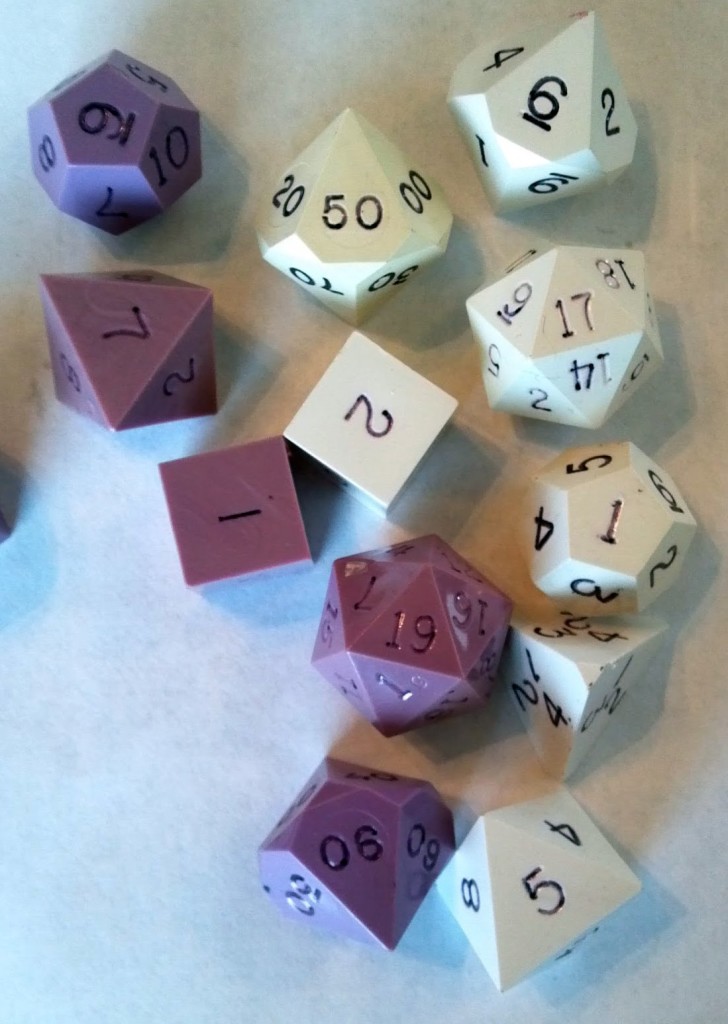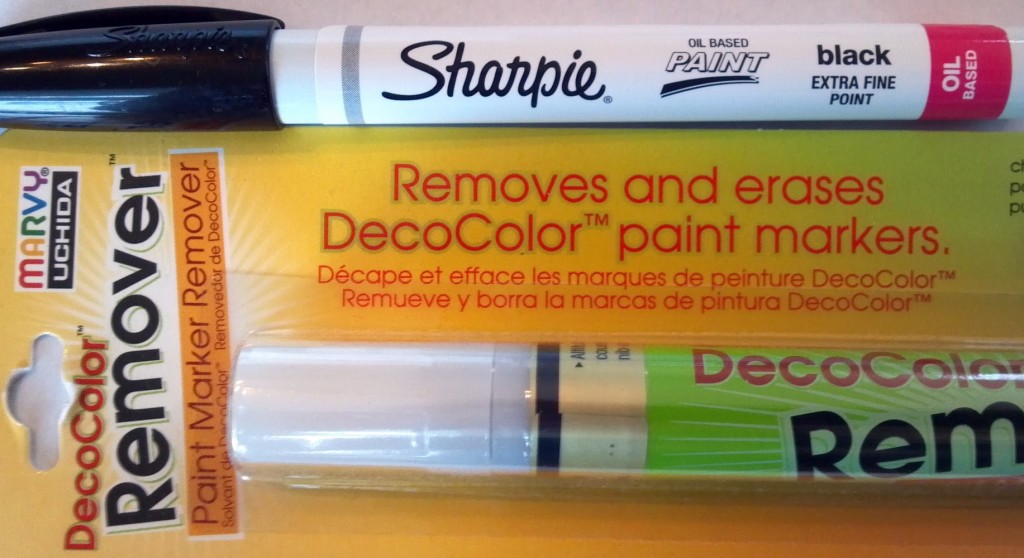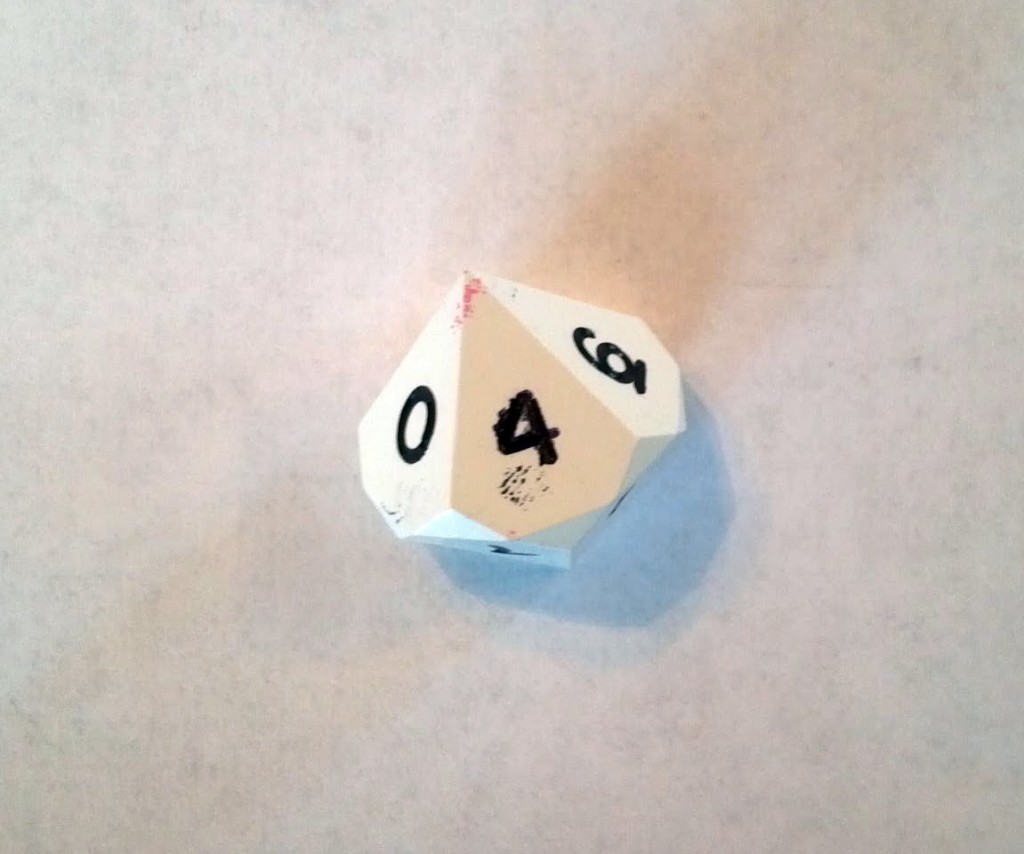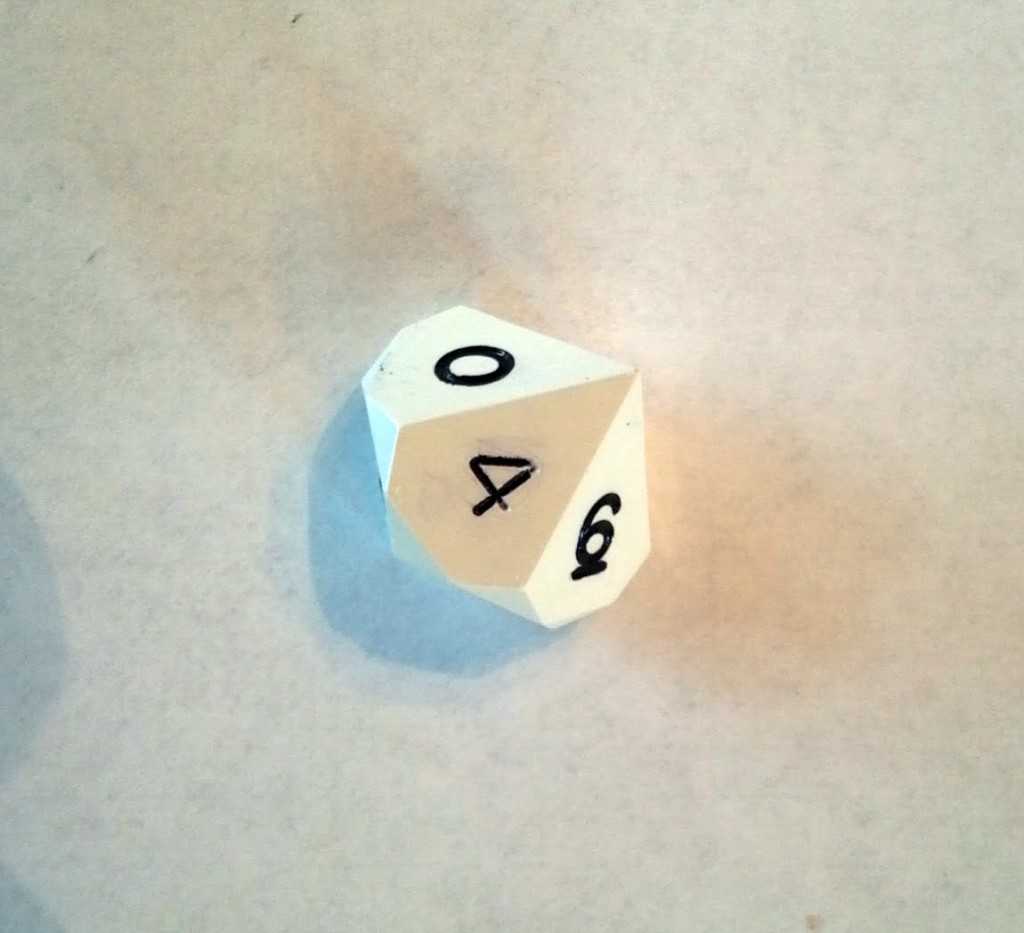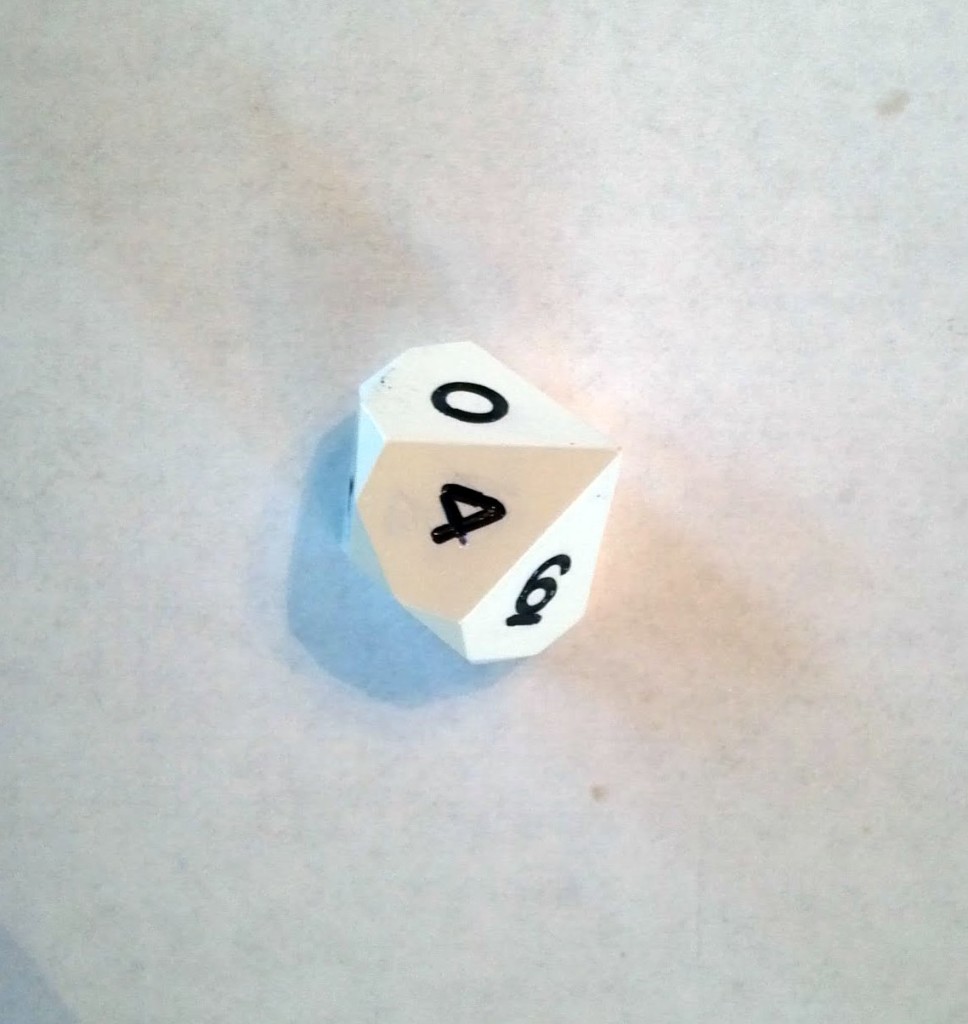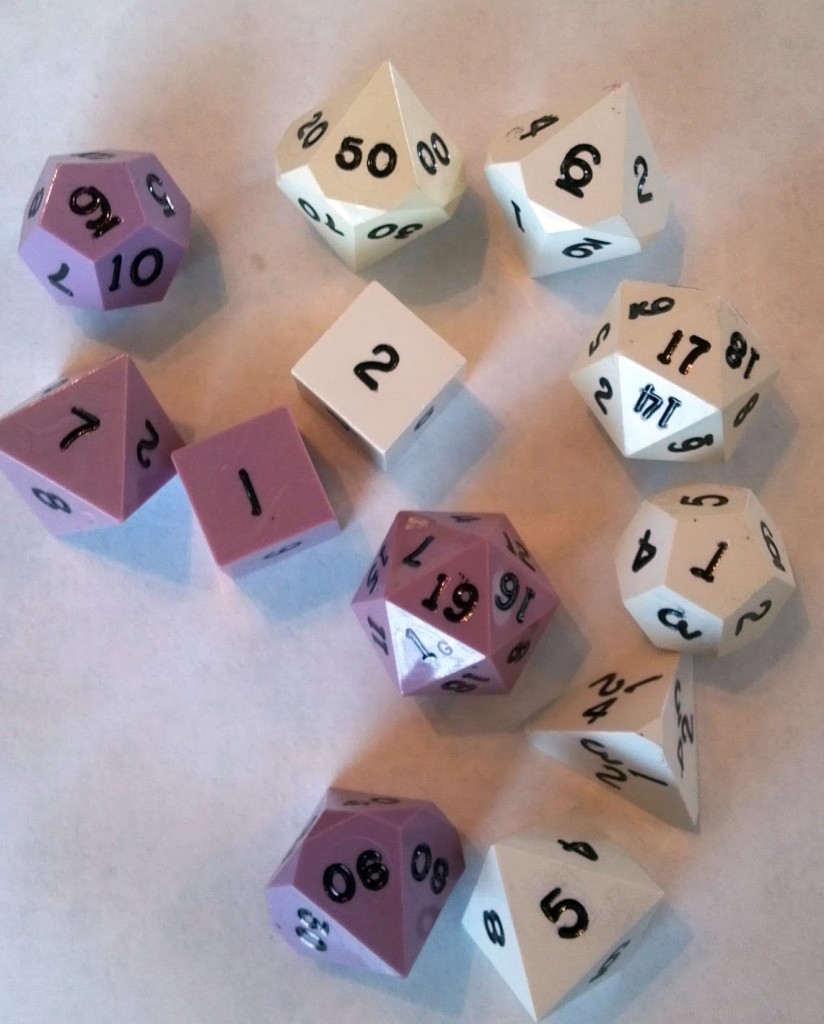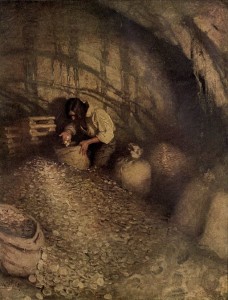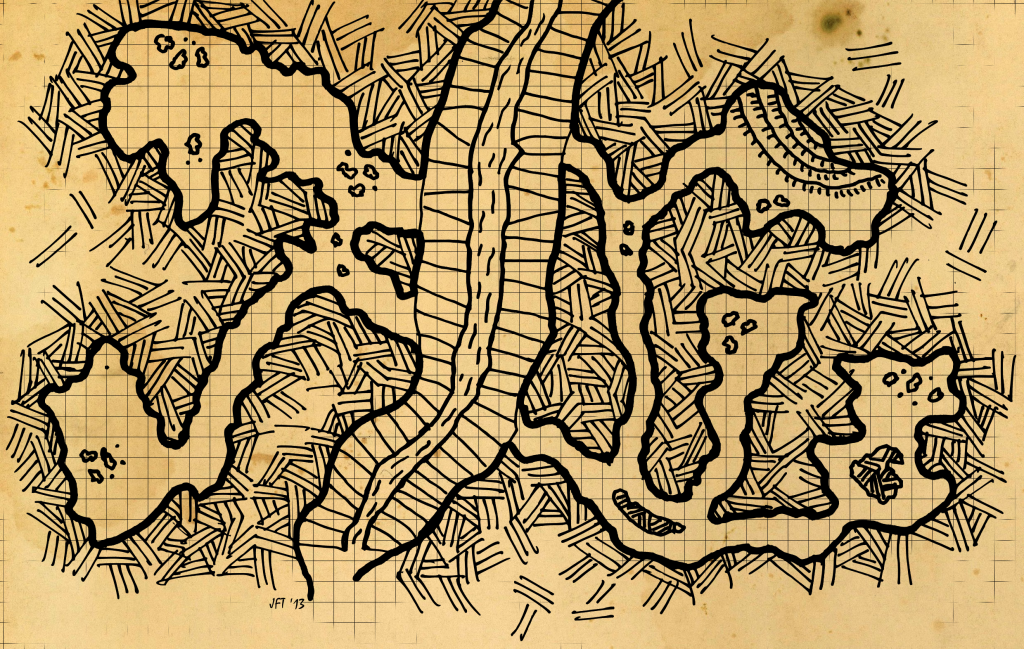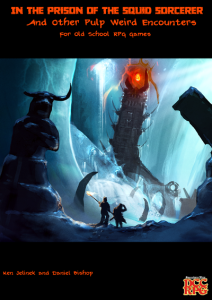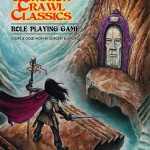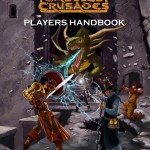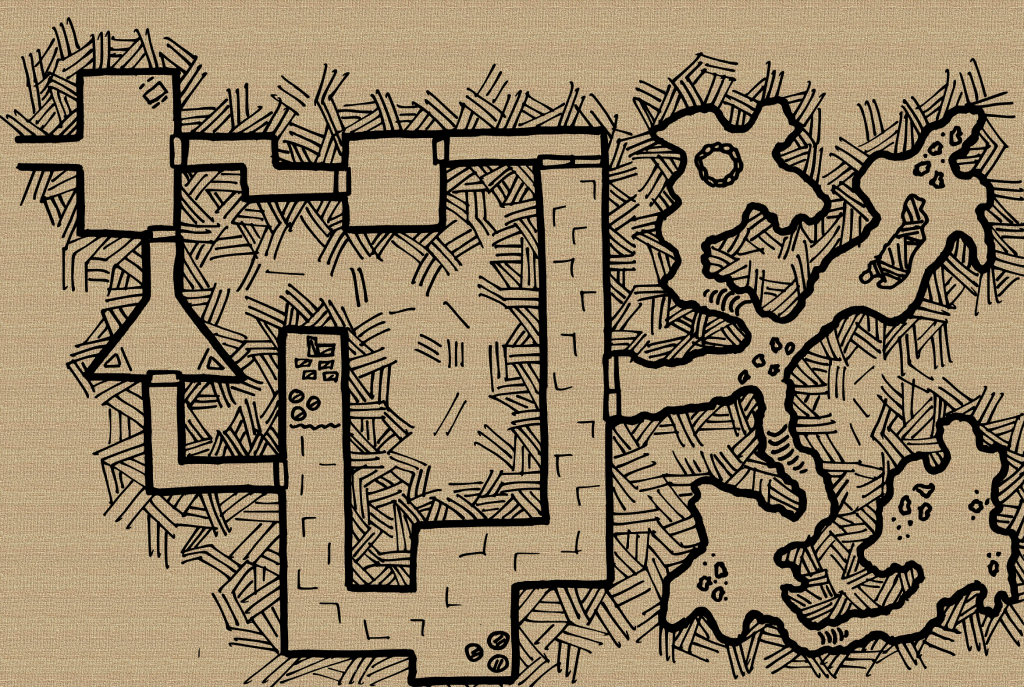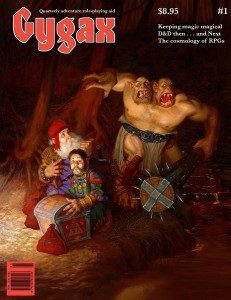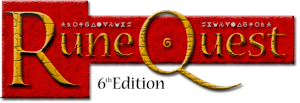 The post below is written by UbiquitousRat, a guest blogger for The Iron Tavern.
The post below is written by UbiquitousRat, a guest blogger for The Iron Tavern.
Darryn and the Bear: RuneQuest 6e Combat
Darryn stepped into the cave. The darkness was palpable but he couldn’t scent anything dangerous, although the breeze was strong here at the entrance. Allowing his eyes to adjust slowly to the gloom, he took another step, and then another…
The roar was deafening. The bellow emanated from deep inside the cave. Darryn was transfixed in his place, instinct forcing him to freeze. Then he saw it. A bear. As large as he, should it choose to stand up, and more. Darryn watched it lumber forward, jaws wide and teeth bared. In that moment, it seemed to him, there had never been anything so terrifying.
Stepping backwards towards the cave entrance, instinct carrying him aware from the intimidating roar of the bear, Darryn lowered his spear as a ward. The bear, unimpressed it seemed, padded forward from the gloom. In a moment it was raising up its bulk and roaring again. Darryn felt a moment of gratitude for the bear’s delay.
Gathering his courage, Darryn stood. The bear moved quickly forward, towards the tip of his spear, and Darryn decided to strike. The animal raised its massive paw and, although Darryn’s spear struck true, batted the weapon away as though it were a twig. Before he knew it the bear was inside his weapon’s reach and biting down upon his unarmoured neck.
Darryn crumpled to his knees, pain searing through his body as the bear ground teeth into his shoulder and ripped flesh from his neck. Darkness swept up to surround him. He felt himself falling backwards. The cave floor beneath his back. A jolt of cold through his spine. And that was all…
RuneQuest 6e Combat
Animals make for nice simple encounters. They are also a nice way to test a combat system without worrying too much about the roleplaying encounter as an interaction.
In my last article we took a look at the RuneQuest Sixth Edition (RQ6) character creation system. This impressive and immersive design sequence was a positive experience that drew me into the system. Following the creation of Darryn, my hunter, I also went on to design Shanna, an initiate of the Moon Cult – a young girl who is learning the ways of Theistic magic (about which I will write in a future article).
Today’s task is to review the Combat chapter of RQ6. Besides reading the chapter, which is an obvious first step, I have also run through a solo engagement using Darryn; this was the tale which opened this article.
First Impressions
To be honest, on a first reading of the rules in Chapter 7, I was concerned that the game would lead to slow and over-detailed fights. I was, however, slightly heartened by a couple of statements in the opening couple of paragraphs which read as follows:
“Combat need not end in death: Although commonplace in some genres, battles do not have to conclude with the demise of opponents. It is as easy to end a fight with the submission or capture of a foe without necessarily killing them.”
What is here revealed is the intent behind RuneQuest combat: if it is easy to begin to fight, and this will always be a potentially deadly fight, then you must remember that it is also easy to disengage. For me the signal was clear that interaction will always be favoured over skirmishing. As is fitting with a system encouraging genuine roleplaying based upon potential consequences from the choices each player makes, RuneQuest mentions it upfront.
Slow? No!
Combat takes up 33 pages of the rules. That’s a fair chunk: Character Creation takes up 54 pages.
There are several elements of combat that are unfamiliar to the average fantasy RPG player. Combat Styles, in which expertise with a group of weapons is packaged together, is a new idea to most; weapon reach and size taking a prominent role in the rules, making it harder to attack a warrior armed with a long spear when you’re holding a dagger, are also innovative. These elements look, at least initially, to be complicated and slightly daunting – even to a veteran GM like me.
And yet…
As was noted in my first article, the thing to focus on here is that the whole system is written to be played. An initial read through, which took me about an hour with a minimum of reference back to earlier rules, was fair enough. But it wasn’t until I busted out the dice and ran an encounter that I got to experience how cool this combat engine truly is.
Running an Encounter
Rather than a dry exposition of the rules I thought it would be interesting to walk you through each step of the combat account of Darryn’s nightmare encounter with the bear. This way you can see how the game works and try to imagine how it would feel in play.
I chose a really simple animal encounter and simply pulled the stats for the Bear straight out of the Bestiary chapter in RQ6. I’ll review that chapter too in the future. For now, just stay with me.
Let’s enter the cave…
 Darryn and the Bear
Darryn and the Bear
Darryn is my hunter character, imagined alone and seeking a place to hole up as night falls on the tundra. He spies a cave.
Darryn stepped into the cave. The darkness was palpable but he couldn’t scent anything dangerous, although the breeze was strong here at the entrance. Allowing his eyes to adjust slowly to the gloom, he took another step, and then another…
I rolled Initiative – a simple d10 added to each combatant’s Strike Rank (SR) value. Darryn’s base SR is 11 reduced by 3, because of his armour, to 8; a 4 rolled gave Darryn an initial Strike Rank of 12. The Bear has a base SR of 13, meaning it would always go first, but added 3 from its roll to total 15.
Each Combat Round is 5 seconds long and allows the characters to act in order of Strike Rank, from highest to lowest. The Bear acts first; Darryn second. Each Turn within the Combat Round allows the acting character to expend one of their Action Points to do something.
First Turn and the Bear, acting on SR 15, bellows a roar using the Intimidation special ability: Darryn must make a Willpower check (he had 20%) or suffer instinctive fear. Guess what I rolled?
The roar was deafening. The bellow emanated from deep inside the cave. Darryn was transfixed in his place, instinct forcing him to freeze. Then he saw it. A bear. As large as he, should it choose to stand up, and more. Darryn watched it lumber forward, jaws wide and teeth bared. In that moment, it seemed to him, there had never been anything so terrifying.
Darryn must withdraw as his instincts carry him backwards. Darryn makes a Change Range action, aiming to put some distance between him and the Bear.
Stepping backwards towards the cave entrance, instinct carrying him aware from the intimidating roar of the bear, Darryn lowered his spear as a ward. The bear, unimpressed it seemed, padded forward from the gloom. In a moment it was raising up its bulk and roaring again. Darryn felt a moment of gratitude for the bear’s delay.
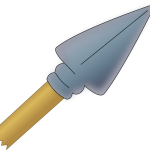 I made the Bear take a Dither action, allowing it a chance to assess Darryn as a threat: most animals seek to avoid a fight. I used this as a chance to get Darryn to spend his second Action Point on readying his spear, partly an instinctive response to the threat in front of him.
I made the Bear take a Dither action, allowing it a chance to assess Darryn as a threat: most animals seek to avoid a fight. I used this as a chance to get Darryn to spend his second Action Point on readying his spear, partly an instinctive response to the threat in front of him.
The Bear, seeing the spear as dangerous, decides to Change Range and move in to paw-bashing range. In game terms, the Bear and Darryn’s spear both have long reach, so the Bear is capable of slapping the man despite the length of that short spear haft.
Round 2 begins with the Bear bellowing intimidation again but Darryn making his Willpower check (I rolled an 11!). This first Action Point spent it was time for Darryn to make a desperate attempt to stab the Bear.
Gathering his courage, Darryn stood. The bear moved quickly forward, towards the tip of his spear, and Darryn decided to strike. The animal raised its massive paw and, although Darryn’s spear struck true, batted the weapon away as though it were a twig.
Darryn hit, beating his 68% Combat Style check with a 57, but the Bear spends an Action Point and attempts to Parry with its huge paws. A roll of 05 against the Bear’s Ursine Fury Combat Style of 78% places the defence inside the Critical Success range (7 or less): the Bear gains a Special Effect and selects the “Close Range” option, allowing it to move inside the spear’s long reach and enter short reach.
Before he knew it the bear was inside his weapon’s reach and biting down upon his unarmoured neck.
The Bear’s next action was to Attack using its Bite. Although only able to use the butt of the spear to Parry, Darryn knows he has to try and spends his second (and only remaining) Action Point to do so. Rolling a 91 means he fails… and the Bear’s attack roll of 19 gives it another Special Effect. Taking “Choose Location” means that the Bear can deliberately attack Darryn’s head location, which I imagined as it snagging the neck.
Darryn crumpled to his knees, pain searing through his body as the bear ground teeth into his shoulder and ripped flesh from his neck.
The Bear rolls its 1d8 damage but adds 1d12 from its massive Damage Modifier (Strength 25 and Size 34 make it very scary!), totalling 11 points. No armour on Darryn’s head location means that all of this damage goes into his 6 hit points on that location. Going under zero hit points, but not quite to a negative equal to his hit points, gives Darryn a major wound. He must test his Endurance or fall unconscious… and Darryn failed the roll.
Darkness swept up to surround him. He felt himself falling backwards. The cave floor beneath his back. A jolt of cold through his spine. And that was all…
In the next round I had the Bear bite again in towards Darryn’s head. An automatic hit against an undefended foe gave the creature another Special Effect. Choosing location again, aiming for the head, the Bear delivered another 1d8+1d12 damage… crushing Darryn’s skull.
How did that feel?
For the purposes of my campaign, which hasn’t yet started, this encounter will be nightmare that inspires a deep fear of bears in the hero.
For our purposes, however, I got to run a short encounter which took less than 10 minutes to play, even with many rules checks and page flips.
Combat in RQ6 is deadly. They say so and they mean it. The rules also mention that most fights last 3 rounds or less. This one certainly did. And I have a new respect for bears.
It was really easy to run, despite all of the extra detail. It was bloody, exciting and felt like the kind of outcome you’d see in a Swords and Sorcery-type story. Overall I loved it!
Points of Note
The game has a number of Proactive and Reactive Action choices that you need to remember to use. Each costs 1 Action Point to use. You’ll probably want a list on hand the first few games… and the free download Game Master’s Pack includes just such a listing.
Similar reference material from the GM’s Pack will help you remember the options for Special Effects. Basically, when you earn one, you can just look up the choices until you get used to the system. They are easy to apply once you start playing.
Overall, RQ6 Combat is really tactical and detailed. It’s also quite quick… which was a surprise!
Frankly I’m starting to think that this game is really nice. It’s one to try and I’m glad I did just that.
It’s just a good job that Darryn was dreaming, eh?
Game on!
Bio
 UbiquitousRat is a long-time roleplayer and gamesmaster who has a history with gaming going back to 1979. In 1994 he joined Games Workshop, spending 12 years in the gaming industry at the coal-face of tabletop wargaming. In 1998 he founded the Friday Night Roleplay group at his home in suburban Nottinghamshire, UK, and ever since has been the primary GM. Oh, and he’s also a high school teacher during the daytime.
UbiquitousRat is a long-time roleplayer and gamesmaster who has a history with gaming going back to 1979. In 1994 he joined Games Workshop, spending 12 years in the gaming industry at the coal-face of tabletop wargaming. In 1998 he founded the Friday Night Roleplay group at his home in suburban Nottinghamshire, UK, and ever since has been the primary GM. Oh, and he’s also a high school teacher during the daytime.
